Kevin Clarke
Operetta Research Center
12 April, 2023
When Linie 1 premiered in West-Berlin back in 1986, three years before the wall came down and East and West Germany were reunited, no one seriously expected this small-scale show to be a hit, let along an international phenomenon.

The poster for the 2023 update of “Linie 1″. (Photo: GRIPS Theater)
Yet, as David Savran writes in his upcoming book Tell It to the World: The Broadway Musical Abroad, Linie 1 has become “the most successful and long-running German musical after Die Dreigroschenoper (The Threepenny Opera, 1928).”
Now, after 1,934 performances until the Corona lockdowns, GRIPS Theater has taken the original production by Wolfgang Kolneder off the repertoire and substituted it with a brand-new staging by Tim Egloff, for new audiences. A version that screams at you, via costumes by Mascha Schubert: welcome back to the 80s!
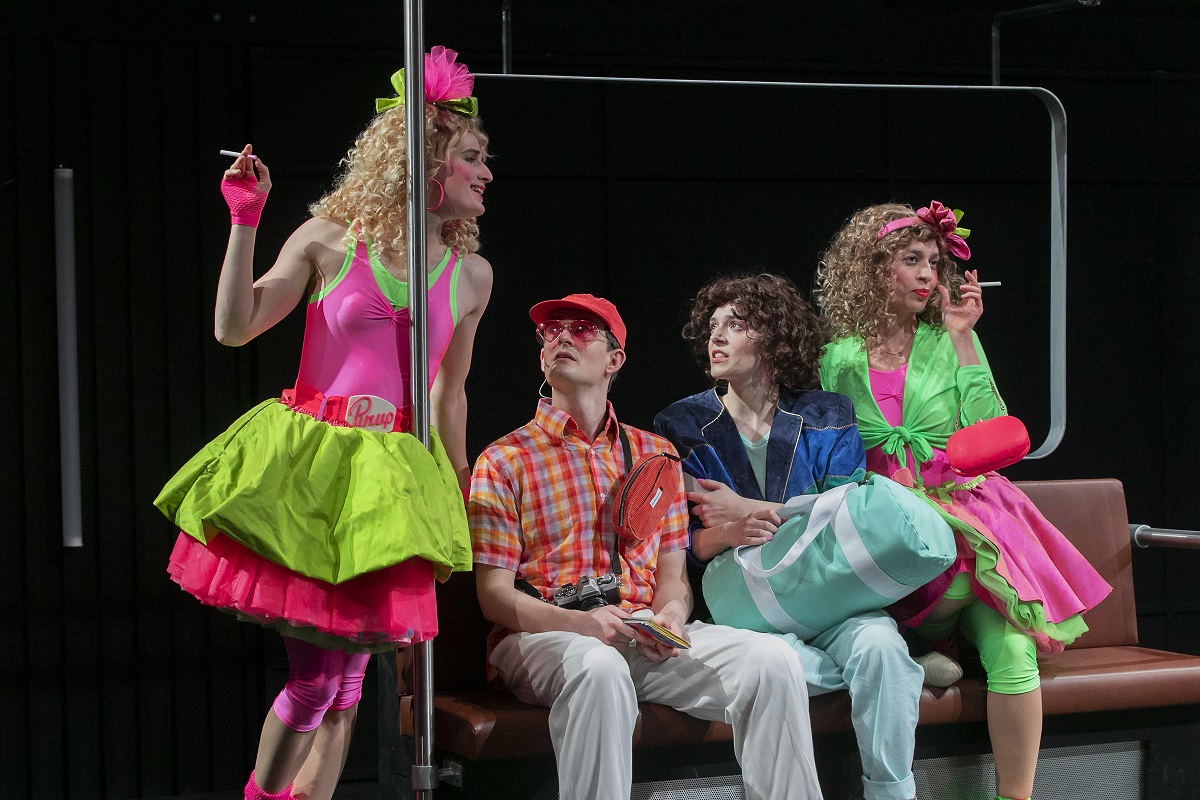
Helena Charlotte Sigal as Natalie (in the middle with the bag) in “Linie 1″, 2023. (Photo: david baltzer/bildbuehne.de)
Of course, Linie 1 is about the 80s and the Lebensgefühl in West-Berlin back then, a city isolated and detached, a place where many men from West-Germany went in order to escape military draft, a gathering point for counter culture, gay liberation and student revolt, but also (right wing) self-righteousness and nightmarish bourgeois stiffness. It’s a mix that is the total opposite to what many see in Berlin today, as a modern cosmopolitan metropolis.
So it was probably wise of Tim Egloff (and dramaturg Tobias Diekmann) to resist the urge of an update, bringing the show and its story into the present, but instead leaving it in the original time frame of 1986. (Wise, because the subway line no. 1 doesn’t run along the stations the show describes anymore, and everything that sets the story in motion isn’t there anymore either, at least not in this form.)
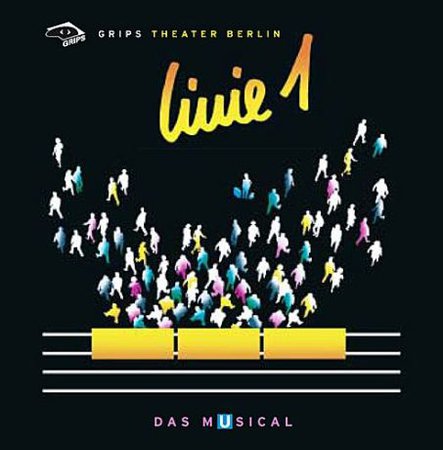
The original cast album of “Linie 1″. (Photo: GRIPS Theater)
As a result, the new production tries very hard to suggest to today’s audience that what you see is what the Eighties looked like (sets by Marian Nketiah). It seems that the original production, with was authentic 1980s style, didn’t look “authentic” enough to fit the idea many younger people have of that era – an idea strongly influenced by fashion retro brands such as American Apparel and film directors such as Ryan Murphy.
One of the recurring themes for the 80s is: neon vs. pastel colors à la Miami Vice. And the most noticeable new thing about the 2023 Linie 1 is the omnipresence of costumes with these color elements, be it a consciously tacky track suit, pullovers or anything you might consider stylishly “ugly”. Who cares that the real 1980s didn’t look anything like this? (Today’s kids and hipsters, who run to see the new productions, weren’t born back then and only know about that era me from Netflix, probably.)
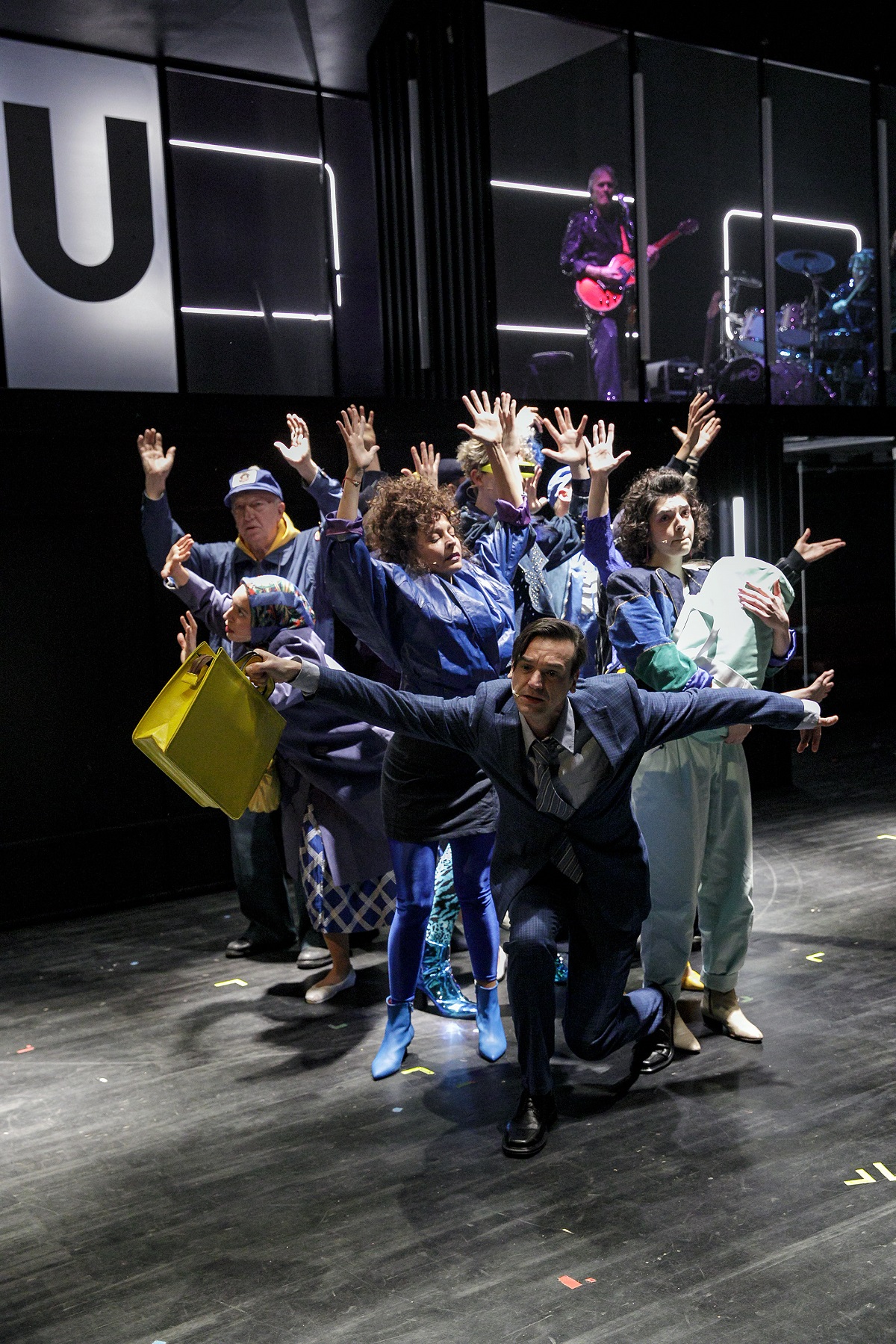
The 2023 cast of “Linie 1″ at GRIPS Theater. (Photo: david baltzer / bildbuehne.de)
Linie 1 performances at GRIPS in Berlin have always been sold out, and the new staging is sold out too for almost all dates that are currently on sale. So not much has changed in terms of attendance. Which raises the question: why bother with replacing the classic original version of this famous show with a text by Volker Ludwig and rock music by Birger Heymann? A show that’s travelled as far as Korea, where it opened in 1994, playing till 2008, when it was crowned the most popular “Korean” musical of all time, as David Savran writes.
The German-language production has toured to dozens of theatres on six continents, we read in Tell It to the World, while the musical has been translated and adapted to local (subway) conditions in many cities. As you’ll recall, the story centers around a girl called Natalie who runs away from home and arrives in Berlin at the central station Zoologischer Garten in the early hours of the day. She wants to meet up with a rock musician she met during a concert, and who apparently got her pregnant. But he’s not there to meet her. On her quest to find him somewhere in Kreuzberg she takes the subway line from Zoologischer Garten to Schlesisches Tor (then the final stop, because the line couldn’t continue into the East) and meets various people, representing the bizarre mixture of society: immigrants, widows of Nazis, drug dealers, a suicidal girl who thinks she’s too ugly to ever find love, a helpful young man called “Bambi” who becomes her guardian angel, the owner of the fast food shop, who feeds Natalie, a tough female real estate agent (who is sleeping with Natalie’s rock star boyfriend), and a lot of homeless people camping on the subway stations. (The list goes on.)
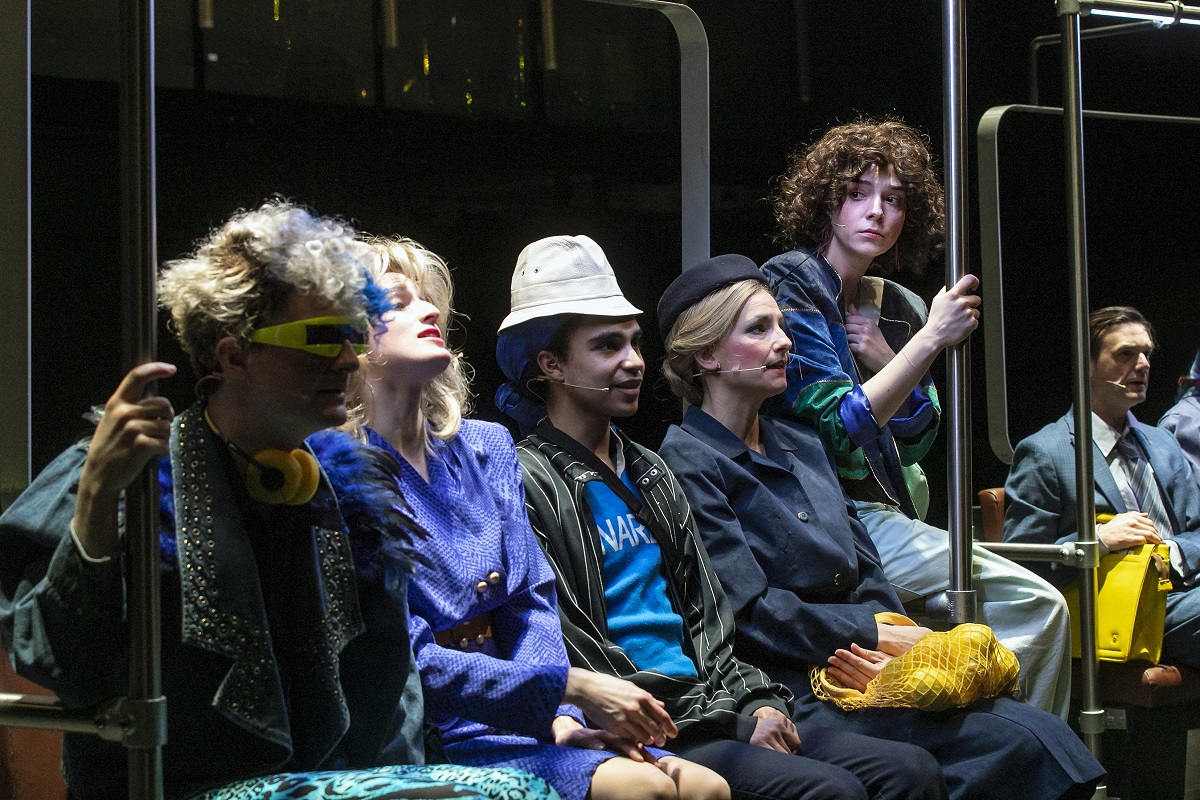
The ensemble riding the subway in “Linie 1″. (Photo: david baltzer / bildbuehne.de)
“With its kaleidoscopic view of the city, Linie 1 is awash in local color and its many list songs catalogue the people, places, and events that made West Berlin unique,” Savran writes. “It was clearly fashioned to be, and remains, the paradigmatic Berlin musical despite (or perhaps because of) the fact that the stereotyped characters turn out to be more contradictory and sympathetic than their labels would suggest.”
The new staging with Helena Charlotte Sigal as Natalie and Eike N.A Onyambu as Bambi remains “basic” in the small GRIPS Theater. There is a central giant staircase, representing the staircase at Zoologischer Garten from the train station above down to the subway station below. A small band of five is situated on the upper level of the stage (where the stairs start), performing the rock score pretty much in the way most people will remember it from the original cast album or the 1988 film version.
The audience is seated on three sides of the bare stage, on which portable elements are rolled in to represent various locations, like the fast food shop, the interior of a subway train etc. Though I myself haven’t seen the old production in 30 years, I couldn’t really make out anything that was noticeably “new” about the staging. It just looked re-vamped without ever catching any “authentic” Berlin feeling that was so evident in the older version.
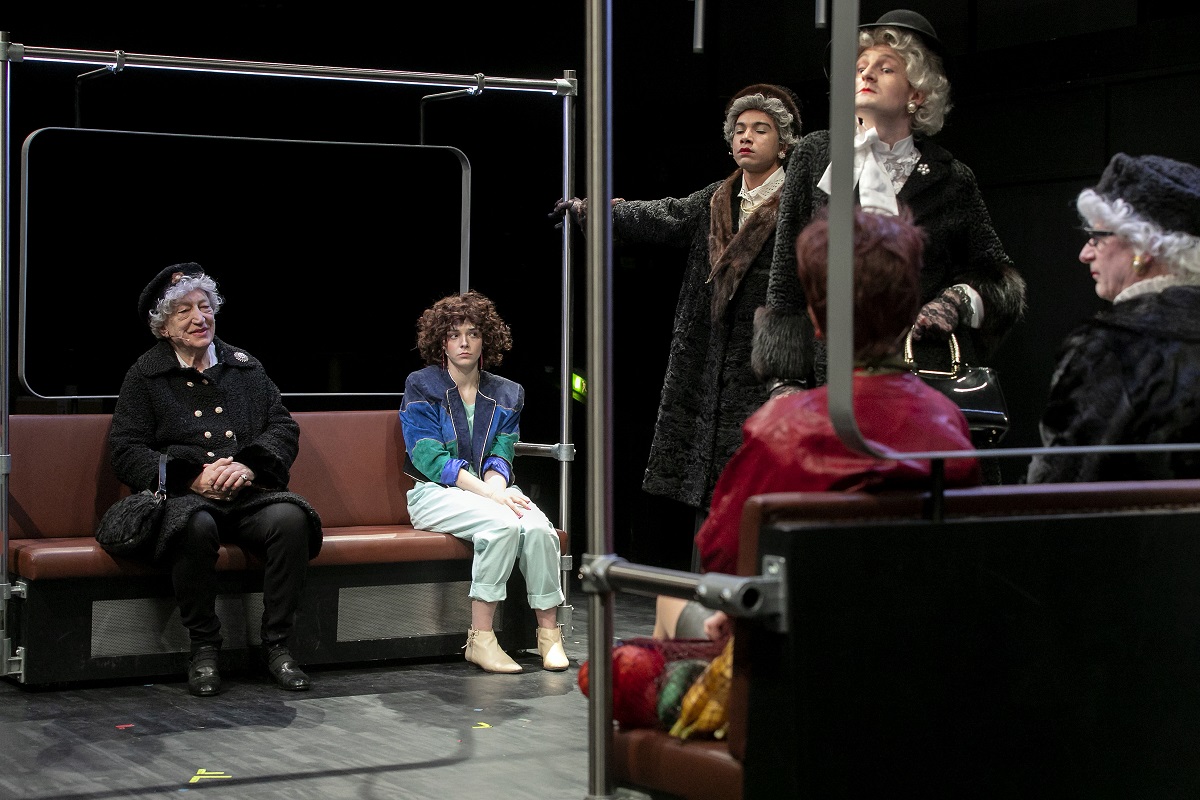
The 2023 “Wilmersdorfer Witwen” at GRIPS Theater. (Photo: david baltzer / bildbuehne.de)
The famous satirical number, “Wilmersdorf Widows,” an oom-pah, oom-pah, beer hall-style march, performed by four male actors in full drag, playing conservative widows (in black fur coats) of Nazi officers still stops the show. But the shock element it once had is gone. (Maybe because such widows are not alive anymore.) Sadly, the social critique of the number is gone too. And it’s just a funny drag moment, not a political statement.
Equally, other political punch lines (about Turkish families, communists, asylum-seekers etc.) are also watered down. Or rather, they delivered in a very watered-down way. Perhaps the cast and director were worried that too strong a delivery might be taken the wrong way, prompting a social media shit storm?
There was certainly more satire in the original stage version and the film version. But perhaps it’s a sign of our times that satire can be scary and easily misunderstood. And a company like GRIPS – specialized on children’s theater with a clear educational message – doesn’t want to be called out as spreading “racist” or “neo-Nazi” ideologies. Especially to hyper-sensitive youngsters who might not speak German too well. (The production obviously caters to international guests with a complete English translation of songs and dialogue running on monitors on both sides of the stage.)
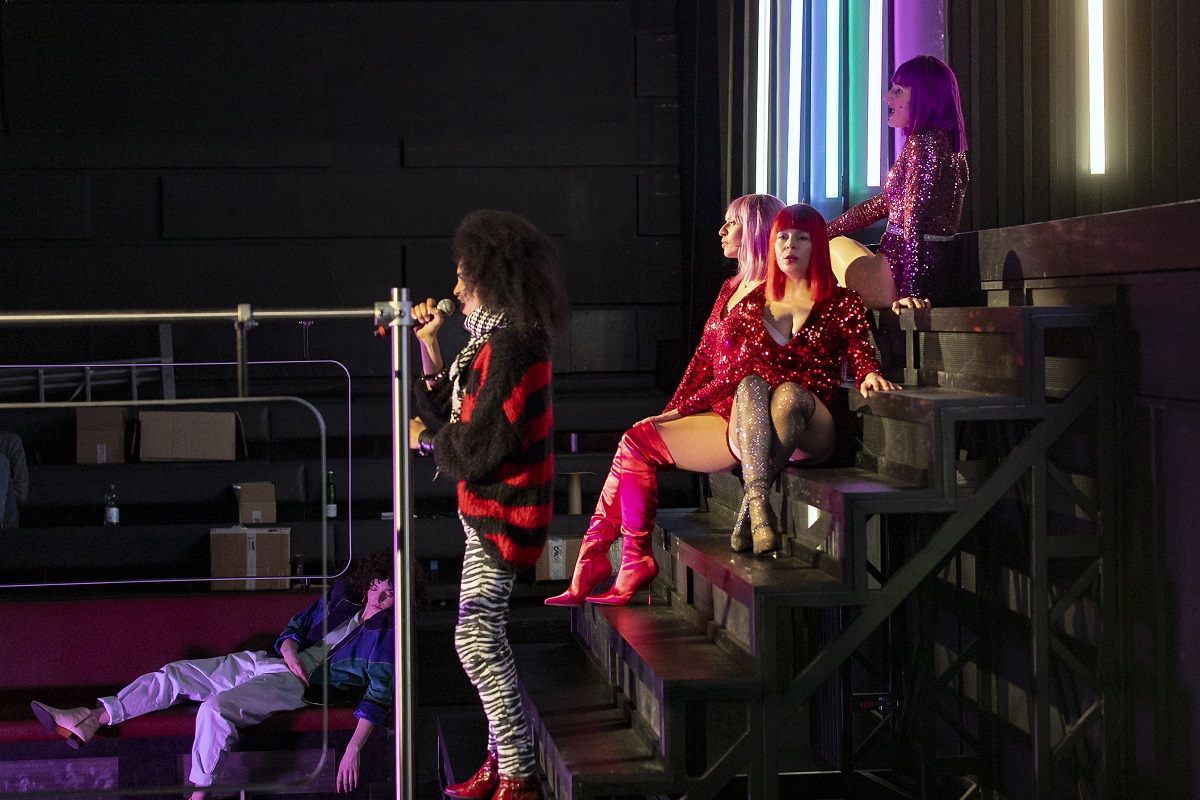
Eike N.A Onyambu as Bambi, plus ensemble. (Photo: david baltzer / bildbuehne.de)
Perhaps my somewhat reserved reaction to the new staging has something to do with the new cast which displays little (to no) star quality. They are all good, or at least adequate, but not in a stand-out way. Nuria Mundry as Maria (the “ugly” girl who sings to Natalie that she is so beautiful) simply didn’t move me emotionally, and Onyambu as Bambi hasn’t got the charisma to be the omnipresent mastermind of the development of this story (he finds Natalie’s boyfriend for her, leading to the happy end in which Natalie realizes that the dream-guy rock musician of her fantasies isn’t the right man for her – she gets together with a stranger she met on the subway who has been following her all day).
Still, the audience around me cheered, and as I said before: all performances are sold out. So the success continues. Probably GRIPS didn’t want to stray too far from the original, so stuck to what most people recall from earlier performances, instead of offering a radical new reading.
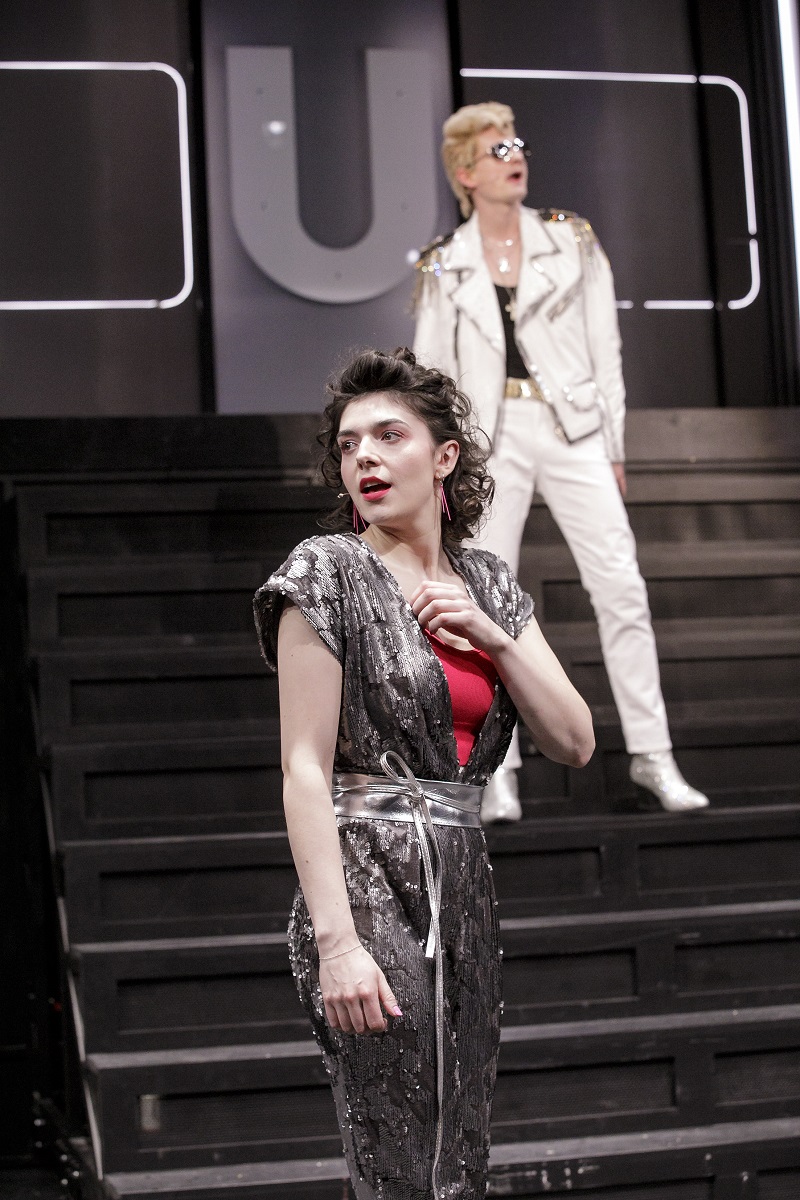
Helena Charlotte Sigal as Natalie with her dream lover in the finale of “Linie 1″. (Photo: david baltzer/bildbuehne.de)
Whether a new cast album will be made remains to be seen. There is a DVD of the original production (with a live 2008 cast). And, yes, there’s the 1988 movie which captures a lot of the spirit of West-Berlin before the wall came down … and everything changed.
Considering how popular musical theater in Berlin has been re-invented in the past decade by people such as Barrie Kosky and Christian Weise (with their fresh look at forgotten operettas) it’s somewhat sad that the new Linie 1 doesn’t rise to such a level. Compared to the most recent newly created musical offering in Berlin – Romeo & Julia especially, at Theater des Westens – Linie 1 remains in a class of its own, no matter how lackluster the casting. Talking of which: when a stage musical version of Fack ju Göhte came to Berlin recently (based on the successful German movie) the highly energetic young cast had everything that the new Linie 1 cast lacked, so it’s not that there’s no one around would could lift the staging off the ground and make it soar – in ful 80s neon-colored glory, dancing up and down that giant staircase.
But the bottom line is: it’s good to see this wonderful show alive and kicking, continuing to enthrall audiences. And it’s special to see it again, at its place of origin, after so many years and so much change in Berlin. Linie 1 remains a classic. And who knows: the ensemble might yet find its way to a more rousing interpretation, once they’ve played the new version a few times.
David Savran’s Tell It to the World (dedicated to his students, “past and present”) will be out later this year.
